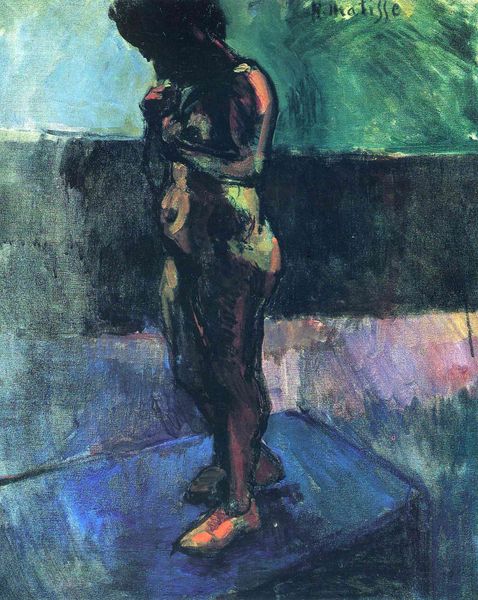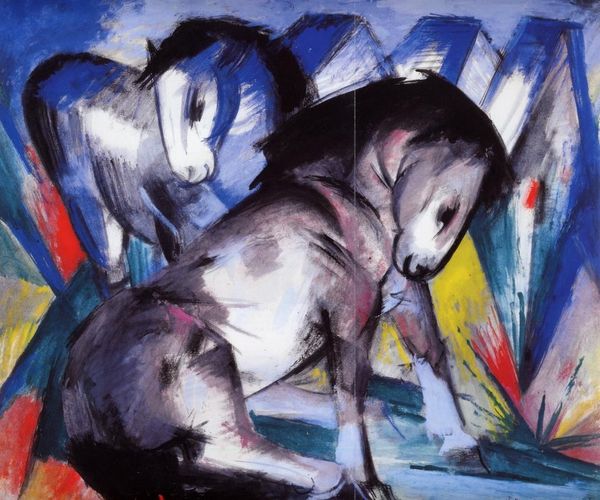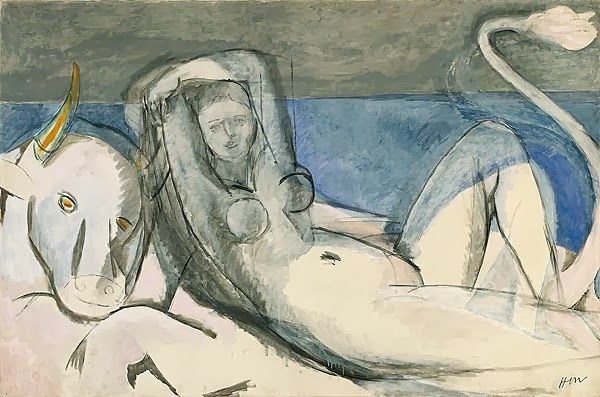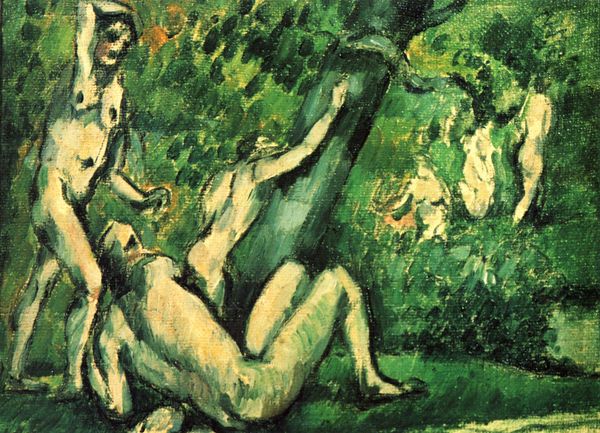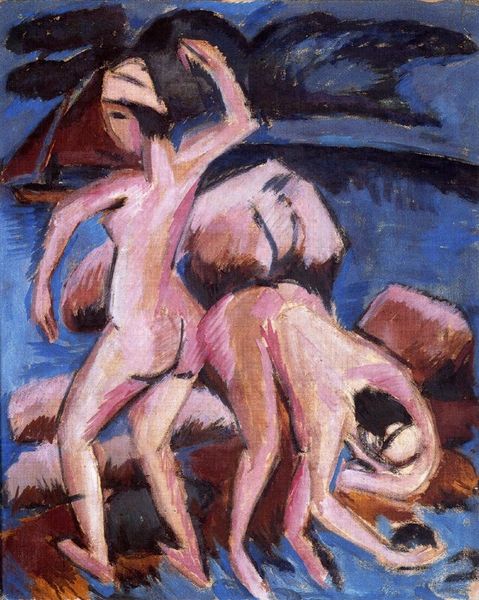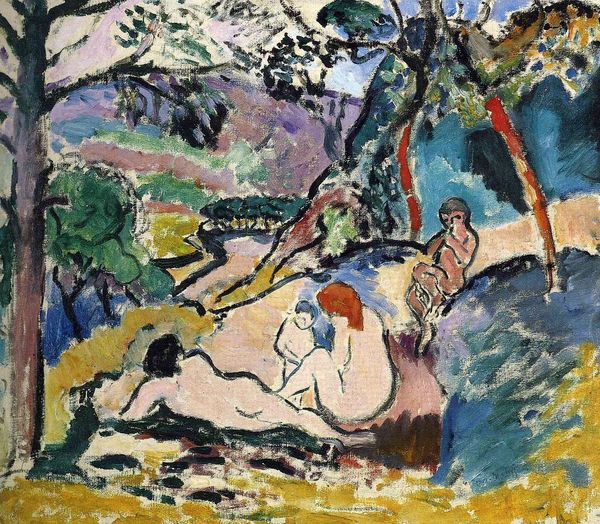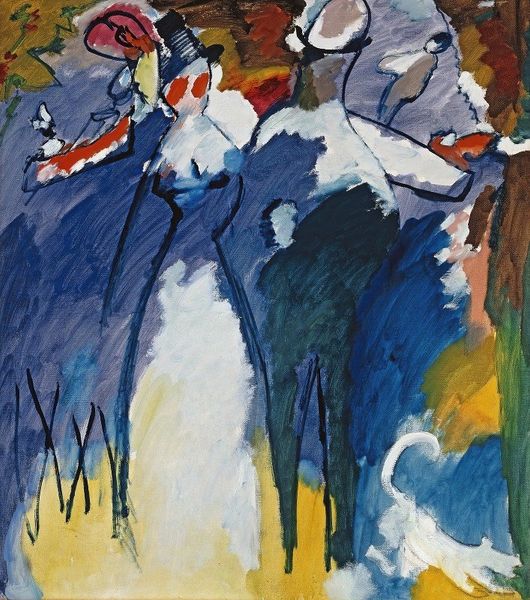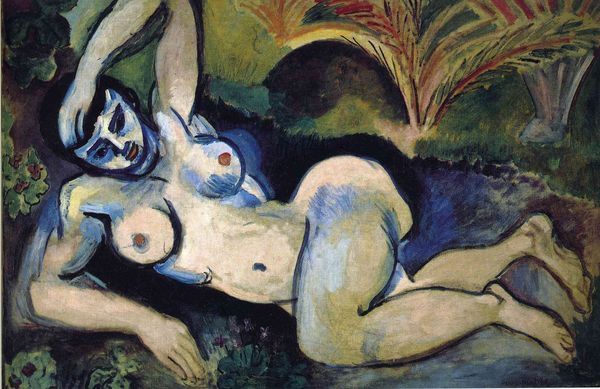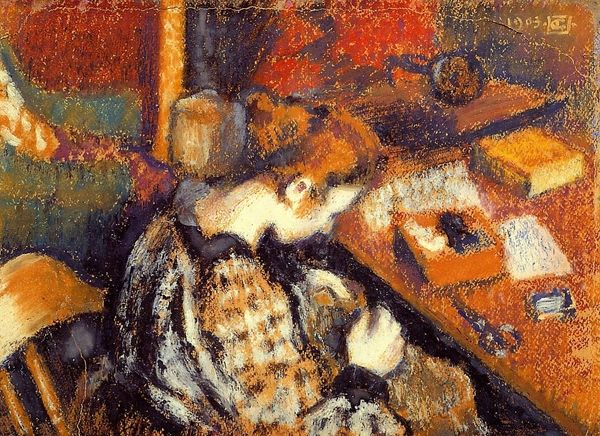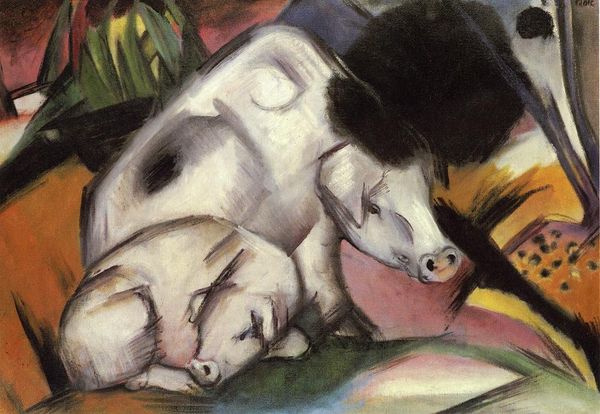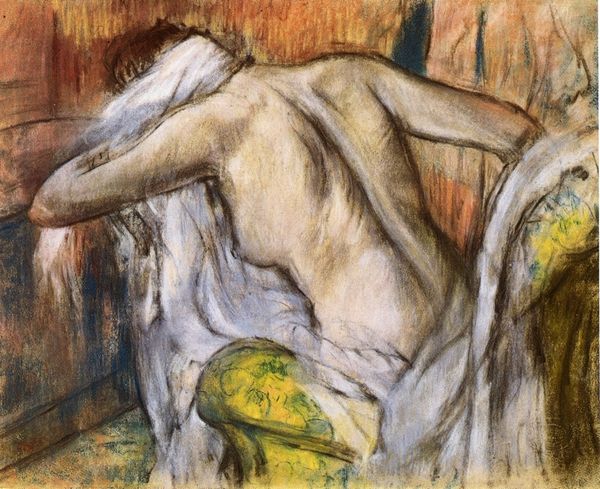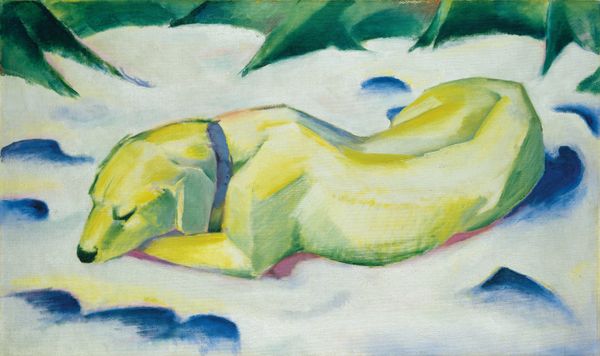
Copyright: Public domain
Curator: Before us, we have Paul Cézanne's "Reclining Nude," painted in 1877. It's held in a private collection. Editor: The figure practically dissolves into the abstracted background; it has a certain chilly anonymity to it. There's no overt eroticism, no real connection with the viewer. Curator: Precisely! Look at the deliberate brushstrokes and the way form is constructed through planes of color, primarily with oil paint and some use of impasto. It's less about idealizing the body and more about an exploration of form and visual sensation, pushing against academic traditions. This canvas subverts the expectations around nude painting. Editor: Agreed. While superficially it resembles academic nudes, the deconstruction of the female form through harsh lines, stark contrasts, and cooler tones pushes the work to portray an objectified, impersonal female body that reflects the patriarchal dominance over female representation. This becomes increasingly radical considering his earlier work focused almost exclusively on the erotic depiction of women and rape scenes. Curator: I find it remarkable how Cézanne elevates the simple act of seeing into the subject of the artwork itself. He treats the human form with the same objective approach as still lifes or landscapes. You have to consider how labor intensive those visible impasto applications are, and then reflect on that process as revealing an industrial revolution slowly changing society. Editor: True, that invites a more critical view on our consumptive gaze. Instead of passively admiring an image, Cézanne compels us to analyze the societal implications and labor behind art making. Curator: Indeed. "Reclining Nude" reveals his interest in rendering an experience of looking and painting, a process that goes beyond traditional artistic rendering. Editor: It shows how Cézanne employed techniques to portray form and social constructs of the human body and how the process unveils a tension between the creator and the observer. Curator: What a revealing way to describe our encounter with the painting! Editor: Glad to share that with you; this has offered some interesting insights, especially when thinking about our times and contemporary debates about such sensitive subjects.
Comments
No comments
Be the first to comment and join the conversation on the ultimate creative platform.
